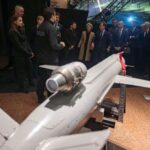
The Navy’s Strategic Systems Program successfully conducted a test of the first stage Solid Rocket Motor (SRM) on May 27 for the Defense Department’s hypersonic weapon effort. The test occurred in Promontory, Utah and specifically is part of the development work for the Navy’s Conventional Prompt Strike (CPS) and the Army Long Range Hypersonic Weapon (LRHW) offensive hypersonic weapons. The Navy noted this was the initial live fire test of the first stage SRM and called it a “vital step…

 By
By 











